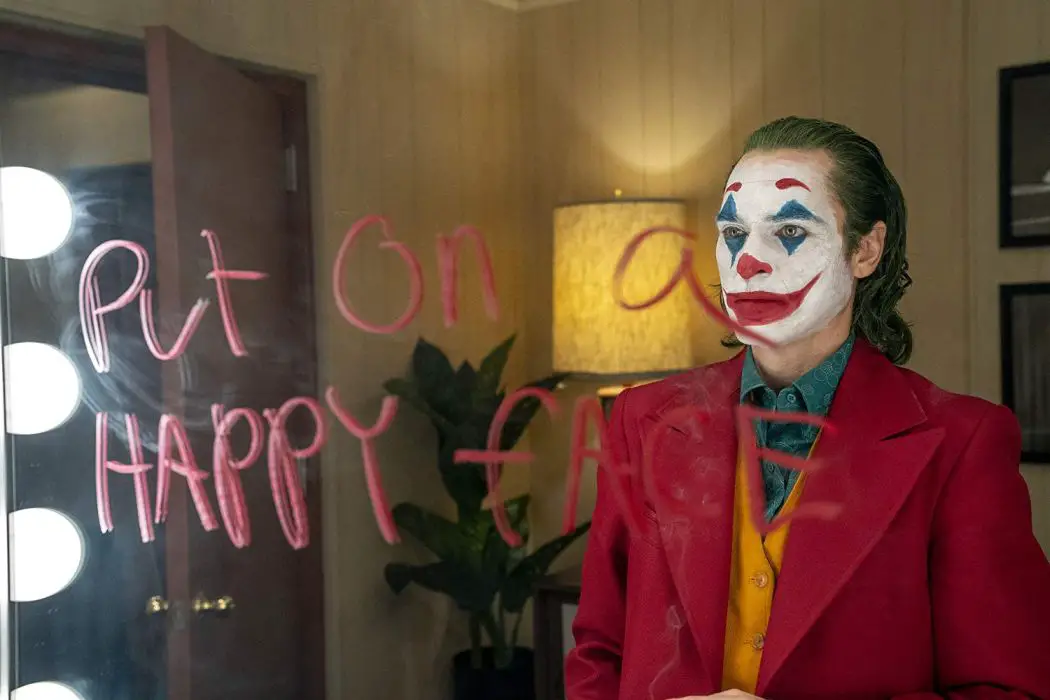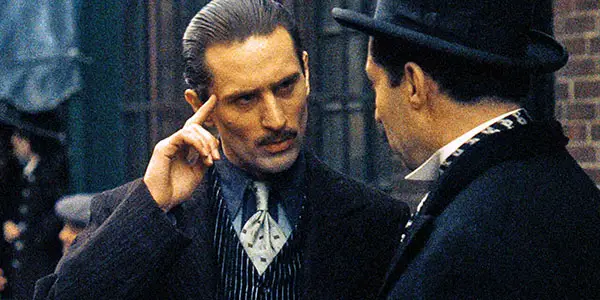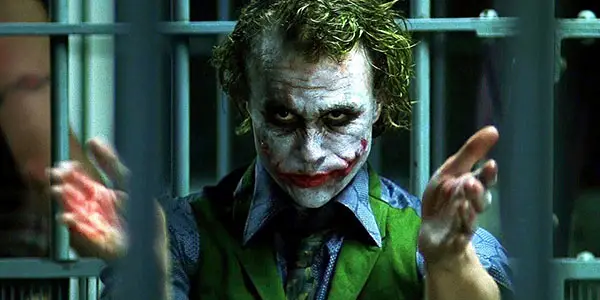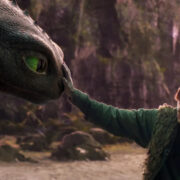The Joker’s Smile, Part 1: The 20th Century’s Most Adaptable Character

Digital Media Program Coordinator and Professor at Southern Utah University…
With the release of Todd Phillip‘s newest film, the Joker has left behind his traditional role of 80 years as Batman’s most vicious and vile villain, coming full circle to become instead a progressive symbol of protest. In this three-part exploration of everyone’s favorite “agent of chaos,” we’ll explore how the Clown Prince of Crime has become, thanks to audiences’ ever-evolving social conscience and critical eye, the newest champion of the 99%.
Still Laughing After 80 Years
The entertainment industry has seen incredible changes over the last century. Countless characters have come and gone across a vast range of media platforms. Delivery methods have gone from the purely physical, with sometimes difficult-to-obtain luxuries such as paper media or live theatrical performances, to mostly digital, and available immediately with a few taps on any one of several billion devices around the world.

Considering the abundance of media released during this time, having a noticeable presence on any one of these innumerable platforms is a significant accomplishment. Extremely rare, though, is the character that has not only survived these incredible changes, but whose name still draws the largest crowds whenever new films, games, books, etc. are announced. Unsurpassed and truly exceptional is the Joker, a character at the pinnacle of artistic success, who even after continuous overhauls in interpretation and portrayal, still packs theaters and breaks records, still fills internet discussion boards to the brim, and still provides an effective tool in storytelling’s greatest purpose: societal critique.
While Batman has been a staple of storytelling for nearly 80 years, much of his success is owed to his ever-present arch-nemesis. Over the eight decades since his first appearance, the Joker has firmly established himself as a character just as fascinating, if not more so, than the Caped Crusader himself. No other villain created in the last century has come close to matching the track record of the Clown Prince of Crime. He’s become the gold standard for actors playing villains, a coveted feather in an actor’s cap, and a testament to the prowess of the artist donning the white makeup.
At the Top of His Game
In 2003, the American Film Institute released its list of the top 100 villains in film history. Consider carefully the top 10: Anthony Hopkins as Hannibal Lecter in The Silence of the Lambs, Anthony Perkins as Norman Bates in Psycho, David Prowse and James Earl Jones as Darth Vader in The Empire Strikes Back, Margaret Hamilton as the Wicked Witch of the West in The Wizard of Oz, Louise Fletcher as Nurse Ratched in One Flew Over the Cuckoo’s Nest, Lionel Barrymore as Mr. Potter in It’s a Wonderful Life, Glenn Close as Alex Forrest in Fatal Attraction, Barbara Stanwyck as Phyllis Dietrichson in Double Indemnity, Linda Blair and Mercedes McCambridge as Regan MacNeil in The Exorcist, and Lucille La Verne as the Evil Queen in Snow White and the Seven Dwarves.
Two things to consider here. First, each of the individuals listed took on these roles before they had earned their place among the greatest of history’s actors. Second, while some of these characters have graced our screens more than once thanks to sequels or reboots, none of the later portrayals have ever come close to the brilliance of the original “definitive” interpretation. Neither of these considerations, actor position nor definitive interpretation, seem to apply when it comes to the Joker; indeed, he seems to transcend both.
To actor position: there is no other single villain with more draw for actors, even those already at the top of the public opinion hierarchy, than the Joker. Jack Nicholson portrayed the Clown Prince near the peak of his career, when he could have done anything he wanted. Heath Ledger was increasingly in demand when he decided to take on the role; even without his masterful portrayal in The Dark Knight, it was clear the talented young actor could have any part he wanted before tragically passing away just before the film’s release. Joaquin Phoenix has established himself as one of the most compelling actors working today, an actor who, once again, could easily secure any part he wants. Even Jared Leto accepted the part fresh on the heels of winning an Oscar.
Four actors, one on the verge of super-stardom, the other three already there. Why the Joker, at this incredible high point in each of these actors’ careers?
“Definitive”
To definitive interpretations: the first incredible performance of a given role almost always comes with a stamp of finality, to which we quickly apply the label “definitive.” Each of the top ten villainous portrayals listed above are easily the definitive version of that character. With the Joker, however, newer takes on the role have surpassed the previously “definitive” performances not just once, but several times. Jack Nicholson overtook Cesar Romero‘s iconic original take, which had stood as the definitive version for two decades. Then, Heath Ledger overtook Nicholson‘s, again coming two decades after the last.
All three of these performances were considered the definitive version of the Joker, but until recently, time had kept them separated by 20 years each. This time, it only took one decade rather than two for the newest iconic Joker to be revealed in Joaquin Phoenix.
Putting aside purely physical characterizations, Mark Hamill has provided another take on the character’s voice, also greatly considered to be definitive. That’s four separate “definitive” interpretations, each one readily accepted by audiences as the Clown Prince, yet also unique enough to stand apart, and there is little doubt the future will bring us even more.

With calls for Phoenix to receive an Oscar nomination for his portrayal, the Joker finds himself at a peak in film history only traversed once before: “How rare is [it] for two actors to win an Academy Award for portraying the same fictional character? It’s happened with just one other role: Marlon Brando and Joker co-star Robert DeNiro each won an Oscar in the early 1970s for portraying Vito Corleone in The Godfather films.” In sharing real estate on a plateau as lofty as that of The Godfather, easily among the greatest films ever made, the Joker has clearly established himself atop the hierarchy of compelling Hollywood villains, and he shows no signs of slowing down.
A Storyteller’s Dream
How did the Joker rise to such a lofty position? How does any single character have so many different portrayals considered so perfect by audiences as to be a definitive take, a word normally reserved for the single greatest portrayal of a given subject? Why is it that a frankly strange and campy villain has become such a draw for storytellers and audiences?
An example that may help to illustrate why the Joker is such an adaptable arrow in the storyteller’s quiver is the question of intent. When we think of what makes someone evil or good, inherent in that thought is the understanding that intent matters. If someone does something terrible and intended to do it, they would be judged as having committed the act with intent, as in cases of manslaughter vs. murder. Intent gets even muddier when sanity is considered.
Consider the Joker: we never know, in any of his various iterations, where he falls on this scale of intention. The consistency and complexity of his crimes certainly seem to suggest that he’s not only perfectly sane, but possibly a genius. And yet his motives, as far as we understand them, seem to be purely chaotic and all over the map, finding but one consistent element: the Dark Knight himself. The stereotypical villain wants to defeat the hero in order to remove the main obstacle to their goals. For most interpretations of the Joker, however, Batman is the goal. This obsession, not to mention the cackling, grinning, viciously violent persona to which he ascribes, makes the Joker come across as absolutely insane.
So which is it? Genius or insanity? Where does he lie in terms of intent? Audiences can never tell, and so consistently return to look for more clues. As Batman himself said in a 2005 comic book written by Ed Brubaker: “I never prepared for this. I planned for the killers, the muggers, the rapists. Desperate people doing desperate things. But I never imagined something like the Joker.”
Another reason for the Joker’s popularity may be his perfect mix of known attributes and mysterious history, fully on display as he tells conflicting stories about how he got his scars; or, his endless creative ability and genius IQ, both dedicated solely to absolute chaos. Still, one reason stands above all: his plethora of potential character traits, each one ripe for development, and each one enough to make any writer, actor, or director salivate.

The Clown Prince is easily just as responsible for Batman’s lasting legacy as the title character himself: an arch-nemesis so effortlessly able to find a home in any new interpretation of Gotham City, continually providing fresh reasons to explore the story of the Dark Knight. We can copy and paste him from era to era, shaking him up and exploring his psychosis through modern eyes.
The Joker is, in short, an infinitely adaptable tool for storytellers: he possesses a certain mix of traits, mystery, and ability that make him flexible and adaptable, comfortable on virtually any stage. An interchangeable template for modern villainy. With his most recent outing in Todd Phillips‘ 2019 film, the Joker has shed dependence on Batman in order to find prime screen time, and transcended his traditional role as a simple comic book or movie villain. The same adaptability that makes him such a compelling character has also brought about his most surprising role to date: a symbol for social change.
Sources, Additional Reading
American Film Institute. (2003, June 4). AFI’s 100 Years… 100 Heroes & Villains. Retrieved from American Film Institute: https://www.afi.com/afis-100-years-100-heroes-villians/.
Boucher, G. (2019, September 9). The Joker, Then and Now: The Last-Laugh History of a Hollywood Wild Card. Retrieved from Deadline: https://deadline.com/2019/09/the-joker-then-and-now-the-last-laugh-history-of-a-hollywood-wild-card-1202671849/.
Brubaker, E. (2005). The Man Who Laughs. New York: Detective Comics.
Lodge, G. (2018, July 11). Is Joaquin Phoenix set to be the greatest actor of his generation? Retrieved from The Guardian: https://www.theguardian.com/film/2018/jul/11/joaquin-phoenix-best-roles-film.
Joker was released in the U.S. on December 13, 2019. For international release dates, see this page.
https://www.youtube.com/watch?v=-_DJEzZk2pcDoes content like this matter to you?
Become a Member and support film journalism. Unlock access to all of Film Inquiry`s great articles. Join a community of like-minded readers who are passionate about cinema - get access to our private members Network, give back to independent filmmakers, and more.
Digital Media Program Coordinator and Professor at Southern Utah University and Southwest Technical College; M.Ed.; Author at Labyrinth Learning and Film Inquiry. Passionate educator of film theory and history. World-class nerd with a wide array of interests and a deep love for many different fandoms.











